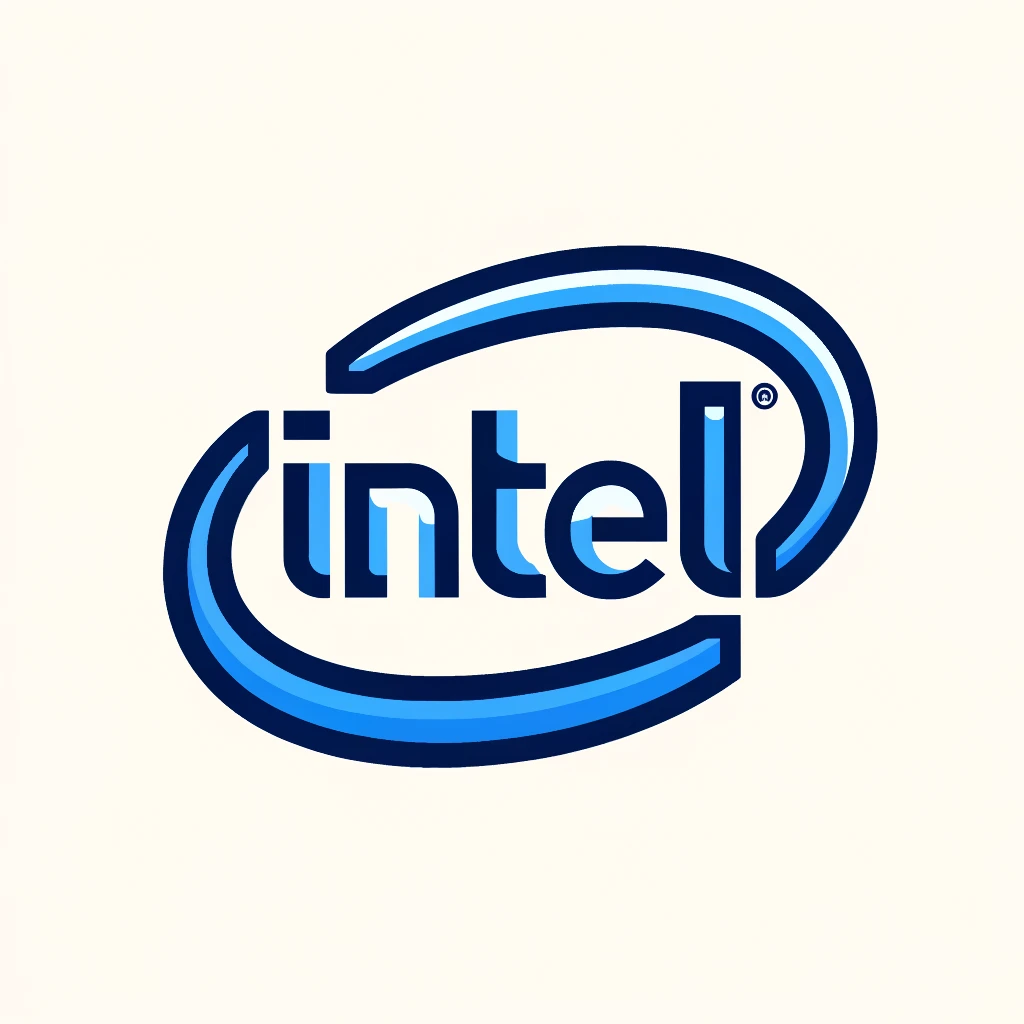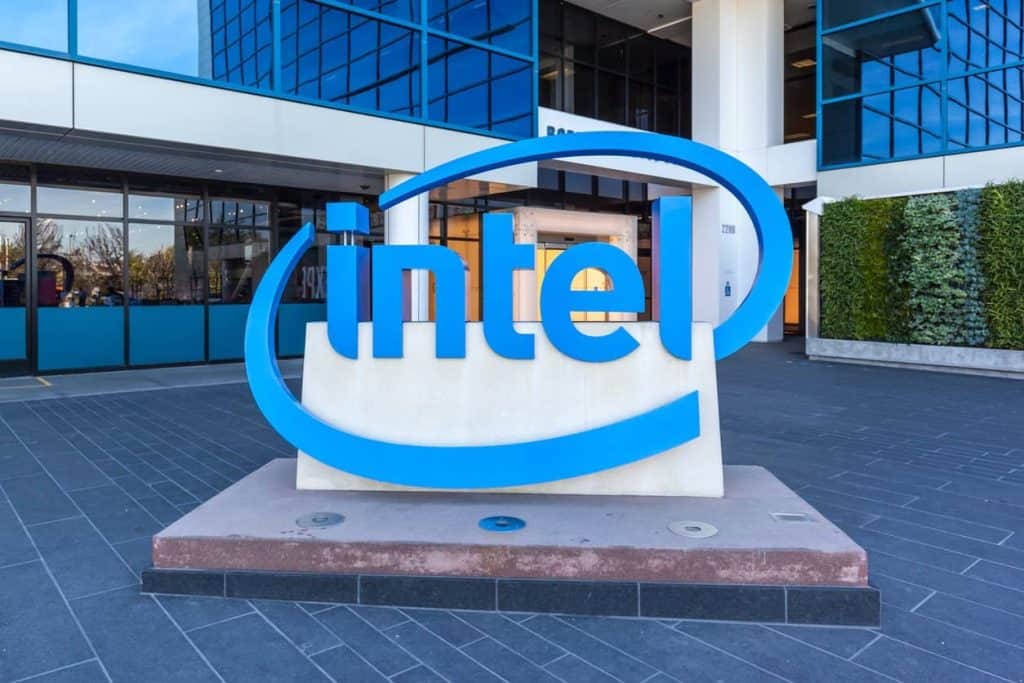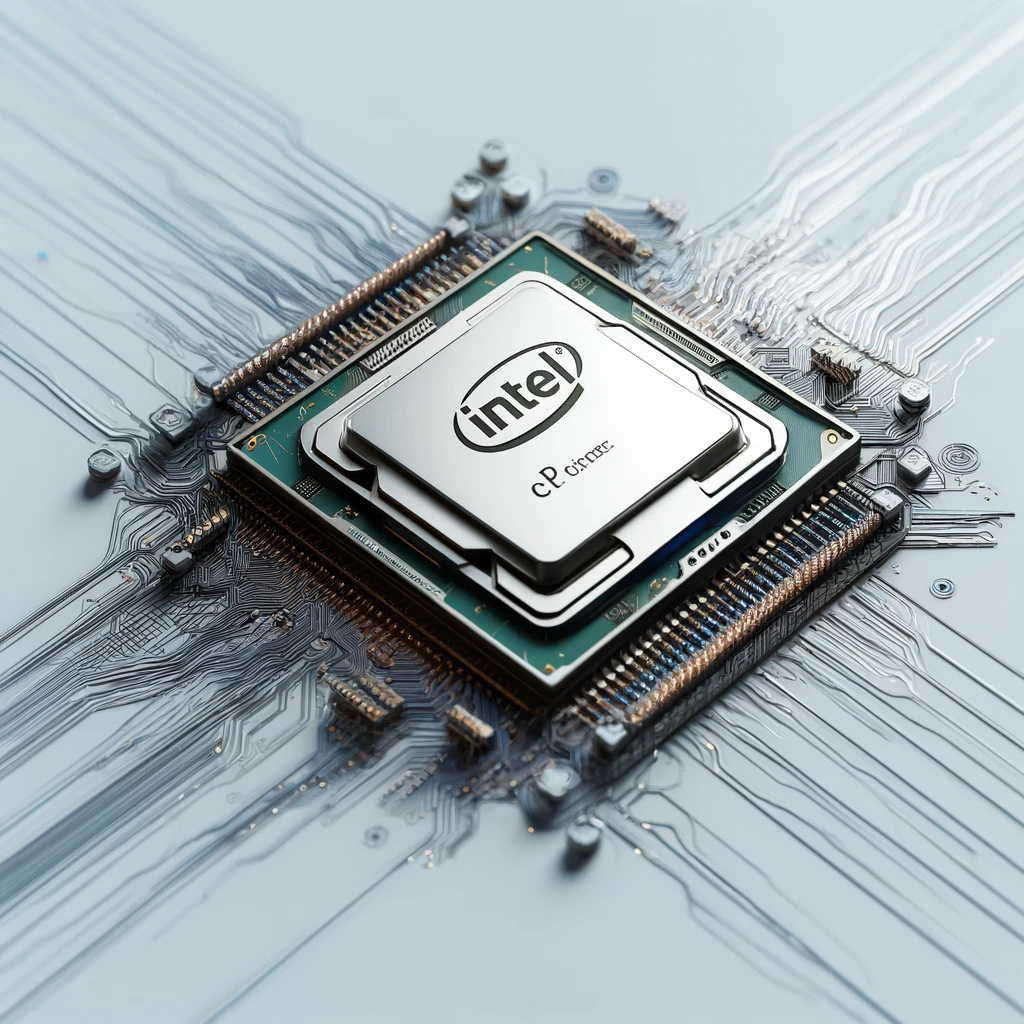
The Birth of Intel: A Silicon Valley Legend
Intel was founded on July 18, 1968, by semiconductor technology pioneers Robert Noyce and Gordon Moore. After working together at Fairchild Semiconductor, they left the company to pursue new challenges. They were joined by venture capitalist Arthur Rock, who provided the initial capital.
Intel’s initial name was ‘NM Electronics’, but it was soon changed to ‘Intel’, short for ‘Integrated Electronics’. From its inception, Intel focused on developing memory chips, and its first product was the 1101, the world’s first metal oxide semiconductor memory. However, the 1101 was not a commercial success, but the 1103 DRAM chip that followed was a huge success and became Intel’s first major achievement.
Silicon Valley connections
Intel is headquartered in Santa Clara, California, in the heart of Silicon Valley, and has been a major contributor to the growth and development of the region. Silicon Valley began to develop as a center for the semiconductor industry throughout the 1950s and 60s, and the founding and success of Intel was instrumental in spurring technological innovation in the region. Intel’s founders came from Fairchild Semiconductor, and they were able to leverage the technology infrastructure and networks of Silicon Valley to grow the company quickly.
Early challenges and successes
One of Intel’s early challenges was financing and technology development. The company struggled to raise enough capital in its early years, but Arthur Locke’s investment, combined with the technical vision of the founders, allowed it to grow rapidly. Intel made a major breakthrough in 1971 when it developed the 4004, the world’s first commercial microprocessor. The chip is the core processing unit in computers and has since revolutionized the computer industry.
Intel also achieved a major commercial success in 1981 when it supplied the 8088 microprocessor for IBM’s first personal computer (PC), which cemented Intel’s market position, and the Intel-Microsoft partnership, later called “Wintel,” set the standard for the PC industry.
Intel has since gone on to lead the semiconductor industry through continued technological innovation and product development, becoming one of the world’s largest semiconductor chip manufacturers. Through it all, Intel has played a key role in the technological innovation and development of Silicon Valley, and its impact continues to this day.
The semiconductor revolution

Understanding the basics of semiconductors
Semiconductors are materials that are halfway between conductors and insulators in terms of electrical conductivity, and are key components of electronic devices and computer systems. They are made primarily of silicon, and their electrical properties can be controlled by small changes in current or voltage. Semiconductors are used to make a variety of electronic components, including transistors, diodes, and memory devices.
Intel’s innovative semiconductor technology
Intel is a leader in semiconductor technology innovation and has made several important technological breakthroughs, most notably the Intel 4004, the world’s first microprocessor. Introduced in 1971, the 4004 was the first to integrate all the functions of a CPU on a single chip, laying the foundation for modern computing.
Intel also introduced the x86 architecture in 1978 with the release of the 8086 microprocessor, which became the standard for PCs and servers for decades to come. In the 1990s, the company introduced the Pentium processor, which significantly increased the performance of home computers. The Pentium processor became hugely popular with Intel’s marketing strategy, which included a campaign called “Intel Inside.
Intel’s technological innovation didn’t stop there: in the 2000s, it introduced multi-core technology with the Core series of processors, greatly increasing the multitasking capabilities of computers. More recently, the company has been building even smaller transistors through 10-nanometer (nm) and 7-nm processes to maximize energy efficiency and performance.
Impact on the semiconductor industry
Intel’s innovative semiconductor technology has profoundly impacted the entire industry. These technological advancements have inspired other semiconductor companies, sparking ongoing competition and innovation. As a result, Intel’s microprocessors and chipsets have become the standard for the global computer industry, driving the rapid advancement of information technology and the digital revolution.
In addition, Intel’s semiconductor technology has been used in a wide range of industries. Our technology plays a key role in not only personal computers, but also servers, data centers, artificial intelligence, self-driving cars, and more. These technological contributions have positioned Intel as a leader in the semiconductor industry globally.
Intel’s semiconductor technology innovations have had far-reaching impacts across the global economy and industries, not just on the company’s success, and are a great example of how technological advancements can transform society at large.
Intel’s Featured Products and Technologies
CPUs and chipsets

Intel’s central processing units (CPUs) are the core building blocks of computer systems around the world. Intel’s family of CPUs includes
- Intel Core Series: The Intel Core i3, i5, i7, and i9 series is a family of products designed to meet the needs of a wide range of users. They are widely used for gaming, graphics work, programming, and more that require high performance.
- Intel Xeon: High-performance processors for servers and workstations, optimized for high-performance computing tasks in data centers and enterprises.
- Intel Atom: Processors for mobile and embedded devices that value low power consumption and efficiency.
Graphics and AI products
In addition to CPUs, Intel offers graphics and artificial intelligence (AI) products:
- Intel Iris Graphics: High-performance built-in graphics solution, ideal for gaming and multimedia tasks.
- Intel Arc Graphics: Intel’s standalone GPU offering that delivers the performance needed for high-resolution gaming and graphics tasks.
- Intel Movidius: An artificial intelligence accelerator chip for edge computing that efficiently handles AI and deep learning tasks.
Memory and storage solutions
Intel also offers high-performance memory and storage solutions:
- Intel Optane Memory: A non-volatile memory technology that provides fast data access speeds, significantly improving system performance.
- Intel SSD: A family of solid state drives (SSDs) that provide high-speed data read/write performance to improve the overall performance of a computer system.
- Intel 3D NAND: A high-density data storage solution, utilized in large data centers and cloud storage environments.
Intel’s business strategy
Market share and competitor analysis
Intel has long been a dominant player in the semiconductor and microprocessor market. As of 2020, Intel held more than 60% of the global CPU market. However, Intel’s market share has declined slightly in recent years due to challenges from competitors such as AMD. AMD has made great strides with its Ryzen processor series, putting pressure on Intel on price/performance.
In addition to AMD, competitors include NVIDIA. NVIDIA dominates the GPU market and has recently been looking to expand into the CPU market. Companies like Qualcomm are also strong competitors in the mobile processor market. China’s semiconductor companies are also growing rapidly, challenging Intel’s traditional markets.
Key business models and revenue structures
Intel’s business model is divided into three main areas:
- Client Computing Group (CCG): This includes Intel’s processors and chipsets for traditional PCs. This group is one of Intel’s main sources of revenue, supplying processors for personal computers, laptops, desktops, and more.
- Data Center Group (DCG): Provides high-performance processors and solutions for servers, workstations, and data centers. This segment is growing rapidly due to the proliferation of cloud computing and the increasing demand for big data processing.
- Internet of Things Group (IOTG): Provides IoT solutions for industrial, automotive, and consumer use. Used in a variety of IoT applications, including smart homes, smart cities, and more.
Intel’s revenue structure is primarily derived from the sale of these products, and it also invests heavily in research and development (R&D). Intel invests billions of dollars in R&D each year to keep its technology innovating.
Recent mergers and acquisitions
Intel has made a number of mergers and acquisitions (M&A) to innovate technology and expand markets. Some of the highlights include
- Acquisition of Altera: In 2015, Intel acquired Altera, a company with field programmable gate array (FPGA) technology, for about $16.7 billion, a strategic decision to boost performance in data centers and network infrastructure.
- Acquisition of Movidius: In 2016, Intel acquired Movidius, a company with computer vision technology, to bolster its artificial intelligence (AI) and autonomous driving technologies.
- Acquisition of Habana Labs: In 2019, Intel acquired Habana Labs, which develops AI accelerator chips, for about $2 billion, which helped bolster Intel’s data center AI solutions.
In addition to this, Intel has been acquiring various tech startups and innovators to expand its technology portfolio.
This strategy allows Intel to remain competitive in the semiconductor market and better prepare for future technologies.
Technology Innovation and R&D
Intel’s R&D investments
Intel invests significant resources in research and development (R&D) to ensure continuous technology innovation. As of 2023, Intel is investing more than $15 billion in R&D annually. That’s about 20% of the company’s total revenue, and it’s helping Intel strengthen its position as a technology leader. These investments play an important role in helping Intel stay ahead of market competition and develop new products and technologies.
Latest technology developments
- Processor technologyPolylang
placeholder do not modify
- Graphics techniquesPolylang
placeholder do not modify
- AI
- AI accelerators: To maximize AI processing power, Intel developed Havana Labs’ Gaudi AI accelerator, which accelerates deep learning model training and inference in the data center. Additionally, with the acquisition of Mobidius, Intel has strengthened its AI vision technology for edge computing.
- Memory and storagePolylang
placeholder do not modify
Future technology directions
- Edge computingPolylang
placeholder do not modify
- Quantum
ComputingPolylang placeholder do not
modify - Next generation communication technologiesPolylang
placeholder do not modify
- Sustainable technologiesPolylang
placeholder do not modify
Through research, development, and technological innovation, Intel is at the forefront of future technology trends, creating new opportunities across a wide range of industries.
Current and future challenges
Market changes and competition
- Competitive pressurePolylang
placeholder do not modify
- Semiconductor shortagePolylang
placeholder do not modify
- The rise of the Chinese marketPolylang
placeholder do not modify
The pace of technological advancement and change
- Microprocessing technologyPolylang
placeholder do not modify
- AI and machine learningPolylang
placeholder do not modify
- Quantum computingPolylang
placeholder do not modify
Long-term vision and goals
- Maintain technology leadershipPolylang
placeholder do not modify
- Diversification strategyPolylang
placeholder do not modify
- SustainabilityPolylang
placeholder do not modify
- Global market expansionPolylang
placeholder do not modify
- Customer-centric innovationPolylang
placeholder do not modify
Through these challenges and strategic goals, Intel is working to effectively respond to the rapidly changing technology and market environment and to achieve sustainable growth.
Conclusion
Summarize and organize key points
Intel is a long-standing leader in semiconductor and computing technology. From its early beginnings in Silicon Valley to today, the company has continued to grow through innovation and technological advancements. Our business strategy consists of the following elements
- Market share and competitor analysis: Intel has traditionally maintained a high market share, but faces stiff competition from rivals such as AMD and NVIDIA.
- Key business model and revenue structure: Intel generates revenue through a variety of product lines, including client computing, data centers, and the Internet of Things.
- Recent mergers and acquisitions: The company has expanded its technology portfolio through acquisitions such as Altera, Mobidisys, and Havana Labs.
- Technology innovation and research and development: Intel invests billions of dollars in R&D each year, pursuing innovations in processors, graphics, artificial intelligence, memory, and more.
- Current and future challenges: Competitive pressures, semiconductor shortages, microprocessing technology challenges, AI and machine learning, quantum computing, and more.
Intel’s Future Outlook
Intel is expected to lead future technology trends, creating new opportunities in a variety of industries. In particular, research and development in edge computing, quantum computing, 5G communications technologies, and sustainable technologies will play a critical role in Intel’s long-term growth. Intel is expected to maintain its technology leadership through continued innovation and strategic investments in the face of intense competition.
Your message to readers
Intel’s journey has been one of innovation and challenge, and even in the midst of today’s intense competition and technological change, we continue to grow as we prepare for the future. We hope you can learn from Intel’s story how constant challenge and innovation can drive a company forward and create new opportunities. Stay tuned to Intel as we continue to experience the changes and advancements in the world of technology and business.
Source
- Careers at Intel (cleverism)
- Intel: Complete Guide – History, Products, Founding, and More (history computer)
- American company (britannica)
